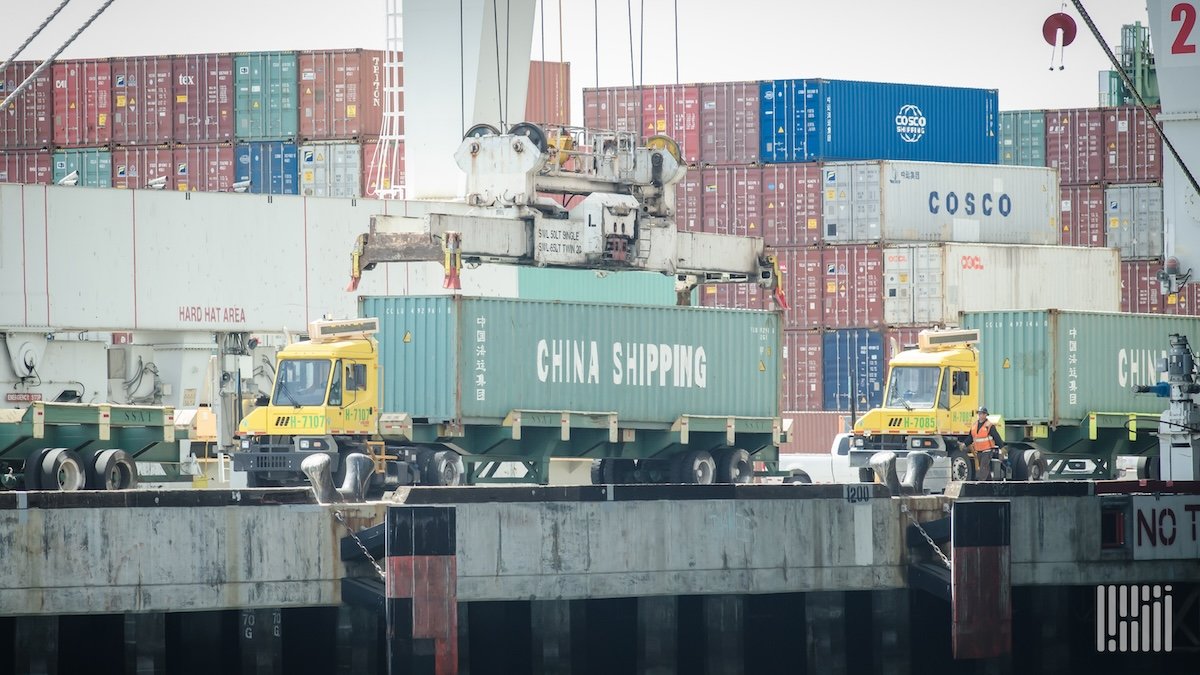The latest weekly ocean container shipping market reveals a stark contrast in rate movements across major trade lanes, as the trans-Pacific trade from the Far East to the United States saw a dramatic decline.
The market average according to analyst Xeneta on Far East to U.S. West Coast services has fallen significantly since a spike on June 1. Declining spot rates have all but erased that recent surge, with rates standing at $3,317 per forty foot equivalent unit on June 27, up just 6% from May 31, effectively neutralizing the recent upward trend.
This trade lane is particularly impacted by the U.S.-China trade war, and it is evident that capacity is now more than meeting demand, empowering shippers to push back against peak season surcharges by carriers.
In contrast, the market average on the trade from the Far East to the U.S. East Coast has seen a more moderate decline, falling 9% since June 1 to $5,990 per FEU. Despite this drop, the spot rate remains 43% higher on June 27 than on May 31 with the spread between the coasts reaching $2,673, the highest in 10 months.
“Average spot rates have plummeted from Far East to U.S. West Coast, down 39% since June 1, but it has not been so dramatic into the US East Coast with rates holding up stronger – for now,” said Peter Sand, Xeneta chief analyst, in a note. “The trans-Pacific into U.S. West Coast is the key battleground for carriers when it comes to China exports, so spot rates have fallen harder and faster as they prioritized bringing capacity back onto this trade in the immediate aftermath of the lowering of 145% tariffs.”
Meanwhile, average spot rates from the Far East into the Mediterranean and North Europe, which experienced jumps in early and mid-June, remain elevated. On June 27, rates to the Mediterranean were 5% higher and to North Europe 14% higher compared to June 1, indicating sustained demand in these regions.
The trade from North Europe to the U.S. East Coast has seen little change, with the market average staying flat from a week ago at $2,105 per FEU. This represents only a 3% increase from May 31. This trade lane is currently influenced by negotiations between the European Commission and Washington on a new trade agreement before July 9, when a 90-day pause on higher tariffs is set to expire.
“Shippers are seeing how this game is playing out and are calling the carriers’ bluff by pushing back on the higher rates and peak season surcharges,” said Sand. “It is only a matter of time until shippers do the same into the U.S. East Coast and spot rates begin to fall sharply there too.”
Find more articles by Stuart Chirls here.
Related coverage:
US maritime chief ‘not a big fan’ of ocean carriers’ ‘approach’ as agency reviews antitrust immunity
Drewry: No “lasting impact” from tariff break as ocean rates fall again
With Mideast shipping on high alert, Maersk re-opens Israel port
Maersk unveils new AI platform to simplify customs tasks

